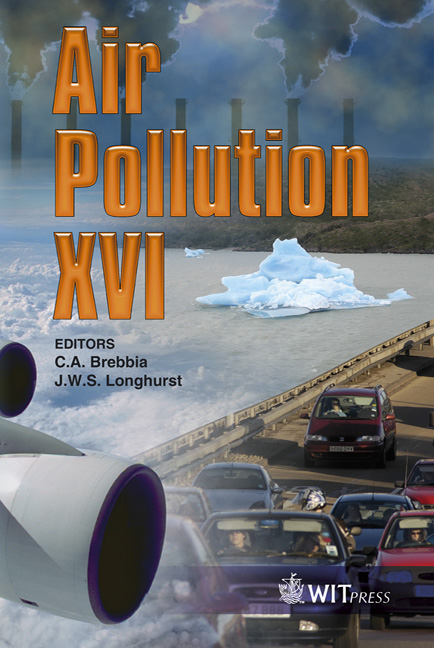Characterisation Of Inhalable Atmospheric Aerosols
Price
Free (open access)
Transaction
Volume
116
Pages
11
Page Range
323 - 333
Published
2008
Size
1,530 kb
Paper DOI
10.2495/AIR080331
Copyright
WIT Press
Author(s)
N. A. Kgabi, J. J. Pienaar & M. Kulmala
Abstract
A better understanding of the chemical constituents of ambient particles is fundamental in bridging the knowledge gap between the air quality and its health effects. In this study, Inductively Coupled Plasma Mass Spectroscopy (ICP-MS), Atomic Absorption Spectrometry (AAS) and Scanning Electron Microscopy coupled with Energy Dispersive Spectrometry (SEM/EDS) were used to characterise the inhalable atmospheric particulate matter (PM10). About 30 elements were identified using ICP-MS and the mean concentrations of Cr, Ni, V and Pb for the sites RMINE and RCBD were found to be 2.55(±1.42) and 0.18(±0.08), 1.41(±0.73) and 0.13(±0.07), 0.28(±0.12) and 0.03(±0.01), and 0.35(±0.15) and 0.48(±0.28) µg/m3 respectively. SEM/EDS yielded information on most crustal elements and their total oxides but could not detect Ni, V and Pb. The Cr concentrations at the two sites in the Rustenburg municipality were measured as 2.28(±0.64) and 0.14(±0.04) µg/m3. AAS yielded the toxic metal concentrations of 1.03(±0.54) and 1.52(±0.56) for Cr, 0.29(±0.09) and 0.58(±0.23) for Ni, 1.37(±1.02) and 1.38(±0.59) for V, and 1.32(±0.27) and 1.31(±0.57) µg/m3 for Pb. All the methods used could not give unambiguous information on specific oxides of metals. Keywords: particulate matter, ICP-MS, SEM/EDS, AAS.
Keywords
particulate matter, ICP-MS, SEM/EDS, AAS.





